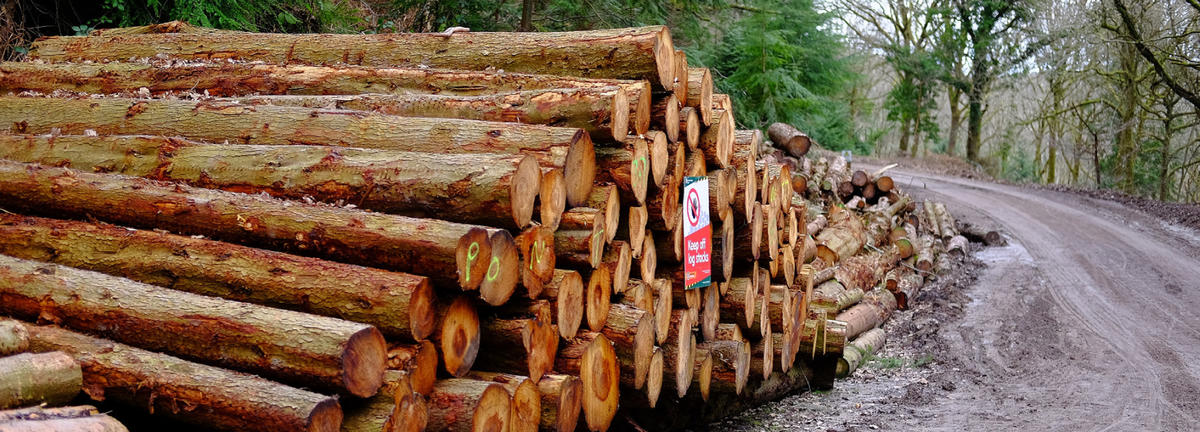
Logs for processing
Image credit: "XT010199.jpg" by Chris Roberts is licensed under CC BY 2.0
Background
Lymantria dispar dispar, or spongy moth, is a terrestrial invasive insect that feeds on over 300 species of trees and shrubs. It only occurs in eastern portions of the state thanks to coordinated efforts to slow its spread across the country. National quarantine guidelines have required for years that wood products (like timber and cut logs) from areas quarantined for L. dispar be staged at least 100 feet away from forest vegetation. Researchers co-funded by MITPPC and the US Department of Agriculture, Animal and Plant Health Inspection Service (USDA APHIS) sought to verify the requirement with field and lab data for the first time.
Outcomes
This project created best management practices for the vegetation-free buffer zones around harvested trees to prevent movement of invasive Lymantria dispar dispar during logging operations. The team found that while buffer zones of 100 to 125 feet in most cases are effective, managers and policy makers should decide acceptable risk in context of factors like:
- Amount and type of vegetation around the wood staging area - Caterpillars will move faster and farther when food is scarce or tree type is not preferred.
- Log deck size - Simulations predicted only 4% caterpillars reaching a log deck with a radius of 25 feet in a buffer zone of 100 feet. With a longer log deck radius and shorter buffer (75 feet for both) roughly 13% caterpillars were predicted to reach the deck.
- Moth outbreak levels - During times of outbreak, more food competition may mean faster-moving caterpillars and high numbers statistically increase risk.
- Hot summer temperatures – Covering buffer zones with dark, heat-absorbing substrates like wood mulch during the hottest parts of the year may discourage caterpillar movement towards log decks.
This work was shared with federal regulators, who are now revising the national L. dispar management handbook at a time when the insect continues to invade Minnesota.
Publications
- Characterizing and Simulating the Movement of Late-Instar Gypsy Moth (Lepidoptera: Erebidae) to Evaluate the Effectiveness of Regulatory Practices (Environmental Entomology, 2019)
- Foliage Type and Deprivation Alters the Movement Behavior of Late Instar European Gypsy Moth Lymantria dispar (Lepidoptera: Erebidae) (Journal of Insect Behavior, 2019)
Outreach
- Upper Midwest Invasive Species Conference, 2018
- ESA/ESC/ESBC Joint Annual Meeting, 2018